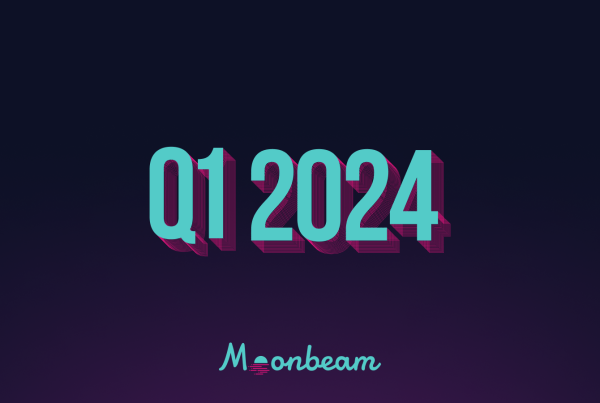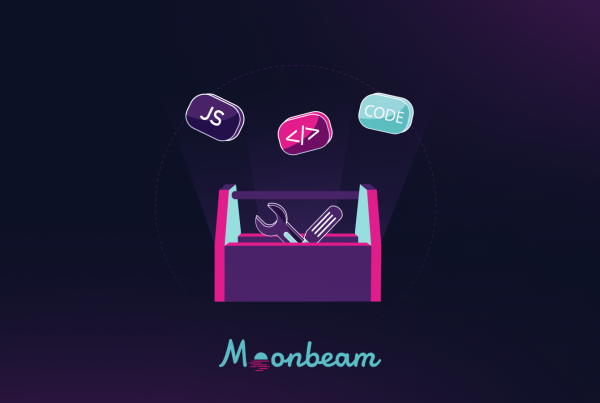In the past few months, we’ve received a number of questions about our relationship with Ethereum. I’d like to clarify something: Moonbeam is designed to complement and extend existing Ethereum-based deployments, not to compete with Ethereum.
In a multi-chain future, Ethereum will continue to occupy a central position, particularly around DeFi and related use cases. We expect its already significant developer and project traction to continue. At PureStake, we are personally big fans of the Ethereum ecosystem including its battle-tested developer tools, among many other things.
In this future, it’s difficult to imagine a world with only Ethereum, or only Bitcoin. Many other chains will co-exist with Ethereum, including Moonbeam and other chains on the Polkadot network. There won’t be a chain monopoly on a particular use case — there will be DeFi activity on chains other than Ethereum as well to serve the users and assets on those chains.
With this context, Moonbeam will be highly complementary to Ethereum, offering the ability for existing Ethereum-based projects to migrate some of their workloads and state off of Ethereum layer 1 to Moonbeam, while at the same time extending their reach to users and assets on other chains.
Moonbeam as an Alternative Ethereum Scaling Strategy
There are two main ways that Moonbeam can help existing Ethereum-based projects: it can alleviate scale and cost challenges, and it can help extend the reach of those projects to users in the growing Polkadot ecosystem. Moonbeam will be optimized for hybrid deployment scenarios, where some of a project’s transactions and state are migrated to Moonbeam while continuing to maintain key components on the Ethereum MainNet.
As existing projects consider their scaling strategy in the face of rising Ethereum costs (in some cases making use cases unviable), Moonbeam presents an alternative to rollup strategies such as ZK and optimistic, and sidechains such as OMG and Matic Network. Moonbeam can provide many of the same scalability benefits as these strategies, but requires far fewer changes in order to achieve them. Its faster blocktime also enables better responsiveness and more granular on-chain data, which is highly valuable in many use cases, particularly for oracle price data.
Moonbeam itself will have substantially more throughput (and, in turn, lower cost) based on its Proof of Stake-based approach when compared to Eth1 and its Proof of Work-based approach. Since Moonbeam is a single shard environment, composability will work the same way it currently does on Eth1.
Using Parachains for Projects with High Scalability Demands
It’s important to note that Moonbeam is not the final destination for applications that need the highest degrees of scalability. Projects with very high scalability needs will migrate some or all of their backend to their own dedicated app-specific blockchain, where they will have full control over upgrades, governance, and have the ability to optimize the underlying storage and transaction implementations to their use case. This dedicated blockchain can also include the Ethereum compatibility components that Moonbeam uses to provide a dedicated EVM instance.
An app-specific blockchain represents the ultimate in scalability and control for a given workload, even if it comes with additional responsibilities such as the underlying runtime implementation, establishing a token economy, and incentivizing and building a node community. If these app-specific blockchains become parachains on the Polkadot network, they will be able to gradually relocate workloads and state from Moonbeam to their dedicated parachains, as needs dictate.
Moonbeam was very much designed for these upgrade and migration scenarios; its entire purpose is to serve as a way to reduce implementation friction, quickly scale to meet immediate needs, and provide an easy entry point to expand into Polkadot and chains connected to Polkadot. And whether projects are deployed on Moonbeam or as Polkadot-based parachains, Moonbeam can continue to be a place where integrations are done and where functionality from app-specific parachains on the network can be composed into higher-order functions before being presented to end users.
Features to Support This Hybrid Model
This focus on Ethereum compatibility and integration has informed the priority features for Moonbeam. These include:
- Full EVM implementation based on Substate’s Pallet-EVM (which in turn is based on SputnikVM). This is needed to provide assurance that existing Solidity contracts will have the same execution behavior as they do on Ethereum.
- Web3 RPC compatibility which means that change will be minimized for existing DApp frontends, and that you can use existing Ethereum development tools such as Truffle, Remix, and MetaMask. We are already working with Parity to implement this as part of the Frontier project.
- A bridge that allows movement of tokens and state between Ethereum and Moonbeam. This is needed to support the hybrid deployment model with a partial movement of logic, workload, and state to Moonbeam.
In the longer term, once XCMP and SPREE are available on the Relay Chain, we will introduce new operations that provide easy developer access to Polkadot’s cross-chain integration functionality from an Ethereum-compatible environment. These features will extend the reach of existing Ethereum projects to other Polkadot parachains and even other sovereign chains that are bridged to Polkadot.
To learn more about testing your Ethereum-based project on Moonbeam, please contact us. You can also join our Riot room or sign up for the monthly Moonbeam Dispatch to be notified when a testing environment is available.





